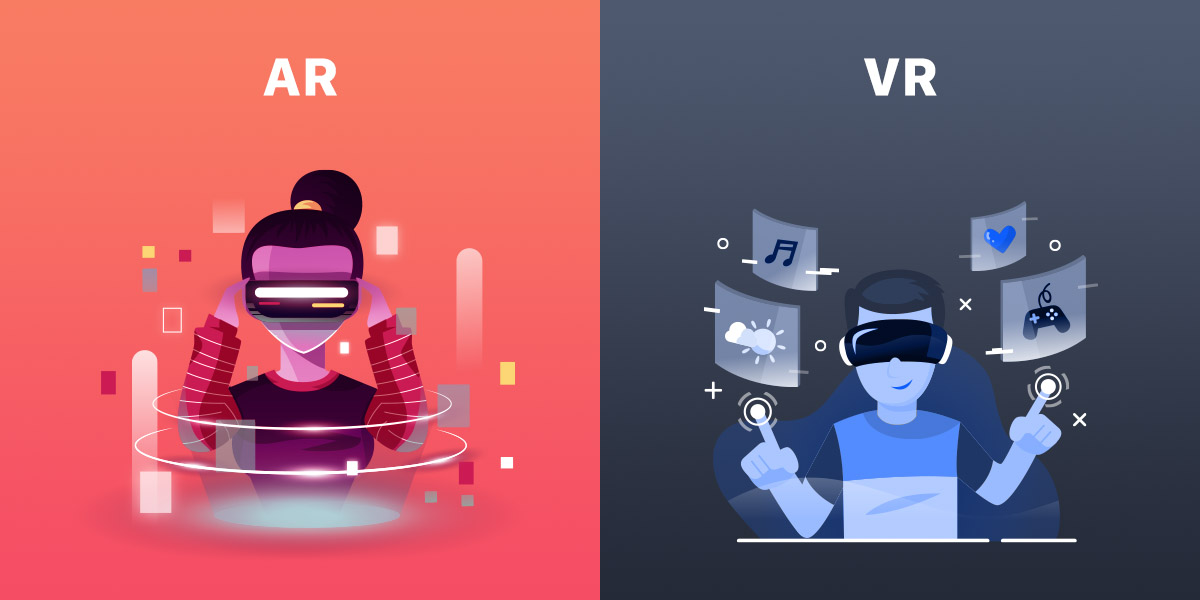Virtual reality (VR) and augmented reality (AR) are both captivating technologies that blur the lines between the digital and physical worlds, but they do so in distinct ways. Let’s embark on a journey to understand the differences between these two cutting-course technologies.
Immersive Escapism: Virtual Reality
VR transports users to entirely digital environments, creating a fully immersive experience. Once you don the VR headset, you’re plunged into a different realm. Imagine exploring ancient ruins, battling dragons, or even attending a virtual concert with a lifelike presence. VR gaming and entertainment have gained immense popularity, offering unparalleled immersion and interactivity. Moreover, VR extends beyond fun, finding applications in training simulations, therapy, and architectural design, where users can navigate and manipulate the virtual environment.
Digital Enhancements in the Real World: Augmented Reality
AR, on the other hand, overlays digital information and objects onto the real world, enhancing your perception of reality. With AR, you can see digital images superimposed on your physical surroundings through your smartphone or AR-enabled glasses. Remember the global sensation of Pokemon GO? Players experienced AR by capturing virtual creatures in real-world settings. AR has practical applications in fields like medicine, where surgeons can access vital patient data during operations, and in retail, where customers can virtually try on clothes or visualize furniture in their home before purchasing.
While VR offers a complete digital immersion, AR enriches your everyday surroundings with digital enhancements. Both technologies are shaping the future of digital interaction, providing new ways to learn, play, and work, each with its unique approach to merging the physical and digital realms.
For consumers, the choice between VR and AR depends on the desired experience. Do you want to escape to a virtual world for an immersive adventure or augment your everyday reality with digital magic? As these technologies advance, they will continue to redefine our relationship with digital content, opening up exciting possibilities across industries and transforming how we live, work, and play.
In the realm of technology, understanding the nuances between VR and AR is crucial, as each holds the potential to revolutionize the way we interact with the world around us. As the digital landscape evolves, these technologies will undoubtedly play a pivotal role in shaping the future of interactive experiences. Whether it’s VR’s immersive adventures or AR’s practical enhancements, the digital realm is poised to become an increasingly integral part of our daily lives. Stay tuned for more updates as these technologies continue to captivate and inspire us.
In conclusion, VR and AR are not mere technological novelties but powerful tools with the potential to transform numerous industries. As their adoption grows, so will the ways we engage with digital content, offering us new perspectives on the world and opening up endless possibilities for innovation and creativity. The future is here, and it’s both virtually and augmented reality.
